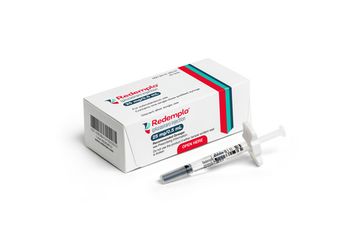
Treatment of bipolar depression now available with Latuda approval
FDA approved two new indications for the use of lurasidone HCl (Latuda, Sunovion and Dainippon Sumitomo Pharma) as monotherapy and adjunctive therapy with either lithium or valproate, for adults with bipolar depression.
FDA approved 2 new indications for the use of lurasidone HCl (
This is the first atypical antipsychotic to receive FDA approval as both monotherapy and adjunctive therapy with lithium or valproate for the treatment of bipolar depression.
"We believe Latuda will prove to be a cost-effective treatment option as it combines effectiveness as monotherapy or adjunctive therapy with a safety profile characterized by few effects on weight, lipids, and measures of glycemic control, low levels of sedation/somnolence, and low rates of movement disorders such as EPS,” said Antony Loebel, MD, Sunovion's executive vice president and chief medical officer.
Bipolar disorder affects approximately 10.4 million people in the United States. Bipolar disorder also has a significant impact on healthcare costs and has been shown to be one of the most expensive behavioral healthcare conditions. The depressive phase of the disorder can be highly debilitating for patients and is often the phase that prompts them to seek treatment. It has been reported that bipolar depression is more likely to be accompanied by suicidal thoughts and behavior than mania, making it critically important to manage the depressive symptoms of the illness.
Two double-blind, randomized, placebo-controlled, 6-week clinical trials supported the two new indications for lurasidone HCl for the treatment of adult patients with bipolar depression, both as monotherapy (PREVAIL 2) and as adjunctive therapy (PREVAIL 1). In both studies, the prespecified primary end point was reduction in depressive symptoms, as measured by change from baseline in the Montgomery-Asberg Depression Rating Scale (MADRS) total score at week 6. The key secondary end point (ie, adjusted for multiple comparisons) was change from baseline in the Clinical Global Impression-Bipolar Version-Severity of Illness (CGI-BP-S) score at week 6. Other secondary end points included changes from baseline at week 6 in responder rates; rates of remission; Hamilton Anxiety Rating Scale (HAM-A); Sheehan Disability Scale (SDS); Quick Inventory of Depressive Symptomatology-Self-Report (QIDS-SR16); and Quality of Life, Enjoyment and Satisfaction Questionnaire-Short Form (Q-LES-Q-SF).
Both studies showed that treatment with lurasidone HCl resulted in statistically significant reductions in MADRS scores at study end point compared to placebo, with significant separation from placebo observed as early as week 2 of treatment. Additionally, across both studies, patients receiving lurasidone HCl demonstrated statistically significant improvements vs. placebo at week 6 on secondary end points.
The most common adverse reactions (incidence ≥5%, in either dose group, and at least twice the rate of placebo) in patients receiving lurasidone HCl as monotherapy were akathisia, extrapyramidal symptoms, somnolence, nausea, vomiting, diarrhea, and anxiety; discontinuation rates due to any adverse reaction were 6.0% for lurasidone HCl and 5.4% for placebo. In adjunctive treatment, the most common adverse reactions in patients receiving lurasidone HCl (incidence ≥5% and at least twice the rate of placebo) were akathisia and somnolence; discontinuation rates due to any adverse reaction were 5.8% for lurasidone HCl and 4.8% for placebo. Patients treated with lurasidone HCl also experienced low rates of change in weight, body mass index (BMI), lipid parameters, and measures of glycemic control.
“The adjunctive study is the first positive study of its type, showing that Latuda produced significant improvement in depressive symptoms when added to patients taking lithium or valproate with inadequate response. For those of us in the field of psychiatry, this is an exciting and important finding,” Dr. Loebel said. “It provides healthcare providers with proven efficacy in treating bipolar depression where there are few options and it offers an established safety and tolerability profile.”
Most of the medications that have been FDA approved to treat bipolar disorder are only approved to treat the manic or mixed episodes of the disorder, according to Dr. Loebel. “The depressive phase of the illness causes the most impairment and distress to patients and is where they spend the majority of their time, yet there have been very few proven options to specifically treat the symptoms of bipolar depression.
“Furthermore, we have heard from both healthcare providers and patients with bipolar depression that the tolerability and safety profile of a medication is an important consideration in the selection of a medication,” he continued. “In the clinical trials for bipolar depression, patients treated with Latuda experienced low rates of change in weight, BMI, lipid parameters, and measures of glycemic control. We believe that these findings, combined with a robust clinical evidence demonstrating efficacy, will make this a useful option for both healthcare providers and their patients with bipolar depression.”
Newsletter
Get the latest industry news, event updates, and more from Managed healthcare Executive.






















































